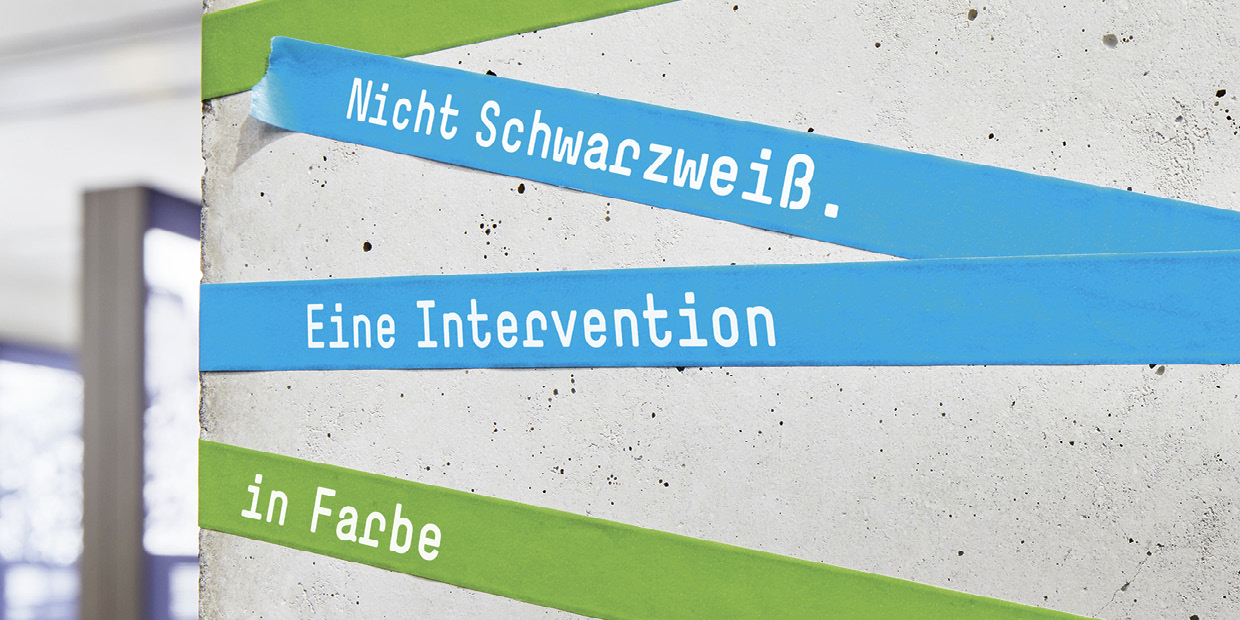Even though the topics they chose frequently had little to with Nazi history—topics such as destruction of the environment, corruption, or equal opportunities—historical memory functioned as a kind of trigger, encouraging the young people to take a critical look at the present, irrespective of whether their grandparents or great-grandparents had themselves experienced National Socialism or whether they came from far-off countries such as Afghanistan, Eritrea, or Iraq. Many of those who participated have a migrant background, and some of them have fled their native countries only recently. Therefore the personal experiences and interests of the students were part of the exhibition concept right from the start. While some chose living conditions in their native countries or the reasons for fleeing as their topic, others addressed racism and its ensuing social exclusion, thus allowing direct connections to be drawn with the Nazi era.
In realising their creative work, they used materials and techniques specific to the professions in which they are training . The vehicle sprayers sketched their ideas by hand, digitized them on the computer, and painted them on boards. These were then distributed over all four floors of the Munich Documentation Center, suspended freely over the horizontal tables of the permanent exhibition. The painters and varnishers cut silhouettes of themselves out of wooden panels, while the sign and illuminated advertising manufacturers expressed their ideas in typographic form, presenting them in interval-switching light boxes. Their message becomes clear only when their statements light up, for example, turning the slogan “no place for Jews” into the statement “no place for hatred against Jews.” Some classes decided to get together to produce collective works of art. The visual marketing designers, for example, present their work on twenty-one wooden panels, each of them showing a single letter embellished in a variety of ways. Juxtaposed in order they spell the motto: “One world, many colors.” The gilders made cardboard cylinders, which when fitted together form a large mobile which hangs in the space between the first and second floors of the exhibition.
The Munich Documentation Center regularly collaborates with various schools and other educational institutions. This results in participative projects in which the students are actively involved and which give them an opportunity to set their own priorities and to find creative answers to the questions of the past, present, and future —questions such as: What does Nazi history have to do with me today? Our educational work in history and politics seeks above all to communicate democratic values and to create an awareness that these values are not automatic givens—as the current increase in nationalist, racist, and antisemitic sentiments demonstrates. In the Städtische Berufsschule für Farbe und Gestaltung the Documentation Center has found a cooperation partner that has espoused the cause of a non-discriminatory society based on solidarity for many years now.


